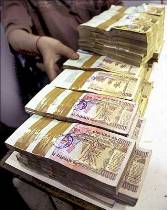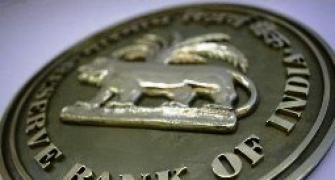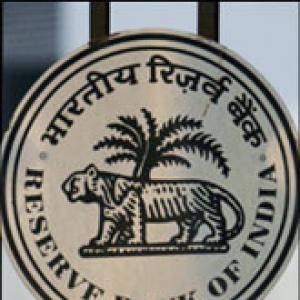Savings bank account holders are a happier lot. The reason: They will earn more on their deposits from April. However, this isn't good news for banks, as their margins will come under pressure.
 Besides, banks will have to grapple with a host of changes, including new norms for pricing loans, in the coming financial year. From July 1, banks will have to link lending rates to their base rates, as against the benchmark prime lending rate at present.
Besides, banks will have to grapple with a host of changes, including new norms for pricing loans, in the coming financial year. From July 1, banks will have to link lending rates to their base rates, as against the benchmark prime lending rate at present.
They will also begin preparations for adhering to International Financial Reporting Standards, though the Reserve Bank of India is yet to issue guidelines for this.
In 2009-10, banks managed the pressure on net interest margins through sharp cuts in deposit rates since the third quarter of 2008-09.
The growth in interest income from advances remained low in 2009-10 due to cuts in lending rates, effected in the early part of the year, and slow credit offtake.
Till Wednesday, the base rate of 3.5 per cent per annum applied on the minimum balance in savings accounts between the 10th and 30th day of each month. From April, it will be applied on a daily balance basis. This raises the effective rate and increases costs for banks.
Karthik Srinivasan, co-head, financial sector ratings, Icra, said the cost of deposits might rise by 15-35 basis in 2010-11. The cost would differ from bank to bank.
A senior official with State Bank of India said his bank would have to shell out about Rs 12 billion (Rs 1,200 crore) extra to pay interest on outstanding amounts in existing accounts. "Assing the additional growth in amounts in saving accounts, the outgo will be more. This poses a huge challenge."
For most public sector banks, whose net margins are between 2.7 per cent and 3.62 per cent, the task is going to be more challenging. This is because the government, a majority shareholder, expects them to maintain their net interest margins at about 3 per cent.
Banks will have to shell out more to attract resources through domestic term deposits in 2010-11 in keeping with the rise in inflation and bond yields, at least in the first quarter, according to a senior public sector bank official. In fact, many banks have already raised their term deposit rates from February.
A challenge also awaits banks on the lending side. D R Dogra, managing director and chief executive of CARE, said the BPLR for private banks was between 3 per cent and 4 per cent, higher than public sector banks. If this differential continues under the base rate system, private banks could find themselves at some disadvantage.
It is likely that most banks will wait and closely align rates to those set by larger peers to be competitive.
According to broking house Macquarie, the new base rate system will not affect the way lending rates will change, as these are determined more by competition and demand-supply dynamics.
The actual impact of the base rate system on NIMs will begin to be visible in second and third quarters of FY11. "We expect base rates for most banks to be in the range of 7-9 per cent. The overall impact of the base rate system is unclear at present due to availability of alternative sources of funding for corporates," CARE said.









